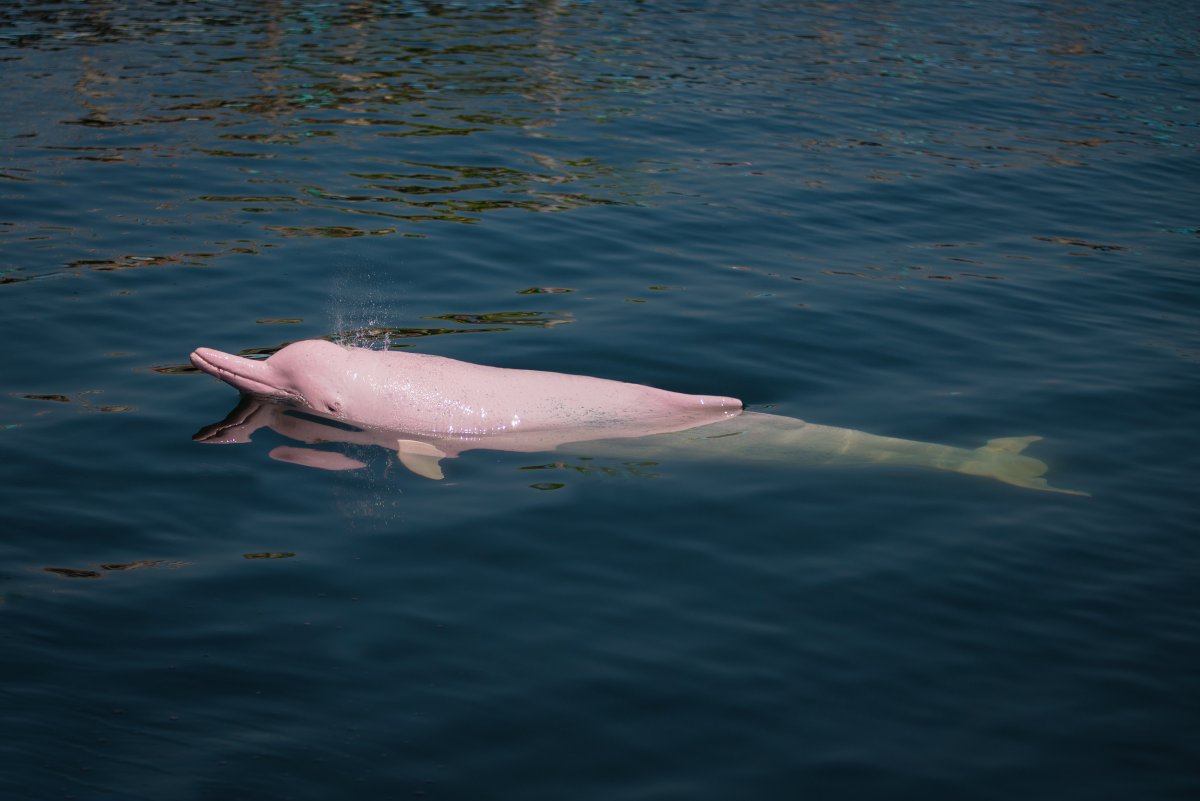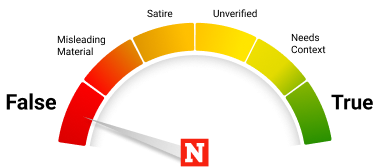There are some mesmerizing things in nature. But as Artificial Intelligence becomes more integrated into society, it can be hard to tell what is real, and what is not. While we all may want to believe that bright pink dolphins were recently swimming in the ocean, we may have to take it with a pinch of salt.
The Claim
Photos and videos showing bright pink bottlenose dolphins have been circulating on social media.
One social media post from photography Facebook page Outer Banks Vibes showed pictures of the pink dolphin washed up on the beach. It claimed that the pink dolphin had been found off a North Carolina beach.
“On the morning of June 19th, a beautiful and rare pink dolphin was discovered stranded on NC Hatteras beach, having been washed out of its natural habitat. A kind-hearted man saw the distressed dolphin and quickly took action to help it return to the ocean, ensuring its safety and well-being,” the post read.
Some social media users reposted the images, either questioning the find or expressing fascination at the creature.
The creator of these images appears to be social media user @Alex Lex, a user who seems to be well versed in the use of AI.
The photos have been widely circulated and have sparked significant interest and debate. Many are questioning whether such creatures are real or if the images are digitally altered or fabricated.
On the morning of June 19th, a beautiful and rare pink dolphin was discovered stranded on NC Hatteras beach, having been washed out of its natural habitat. A kind-hearted man saw the distressed…
The Facts
Pink dolphins are, in fact real, but their existence is often misunderstood. There are two types of species associated with the term “pink dolphin.”
The first is the Amazon river dolphin, also known as the boto (Inia geoffrensis), which is found in the freshwater systems of the Amazon and Orinoco river basins in South America. These dolphins are not born pink, but the color develops with age. However these dolphins do not live in the ocean, meaning this North Carolina dolphin cannot be one of this species.

aniroot/Getty
The second type of pink dolphin, often highlighted in viral claims, is an individual bottlenose dolphin named Pinky, discovered in Louisiana. But Pinky’s distinct coloration is due to a genetic condition, rather than the environmental or physiological factors affecting Amazon river dolphins. Pinky has become something of a local celebrity and a tourist attraction since her discovery in 2007.
Despite the fascination with these dolphins, their populations face significant threats. Amazon river dolphins are listed as endangered due to habitat loss, pollution, and other human activities. Conservation efforts are crucial to their survival, involving habitat protection, reducing pollution, and enforcing fishing regulations to prevent bycatch.
But, while these types of pink dolphins do exist, it is highly unlikely that these social media photos are depicting them. They are extremely rare and the factors contributing to their pink coloration are often misrepresented or oversimplified in viral content.
Fact Check website Snopes even went so far as to run the image through AI, with results coming back that there is a 99.9 percent chance they were AI-generated.
The Ruling

False.
Due to the origin of the images from an account known for sharing AI-generated content, including other pink dolphin images, it is safe to say these photos are fake. The use of Hive AI-detection software from news outlets, estimating the likelihood of the images being AI-generated at 99.9 percent, also backs this up. It is also highly improbable to spot a real pink dolphin off the North Carolina coast.
FACT CHECK BY NEWSWEEK
Uncommon Knowledge
Newsweek is committed to challenging conventional wisdom and finding connections in the search for common ground.
Newsweek is committed to challenging conventional wisdom and finding connections in the search for common ground.






